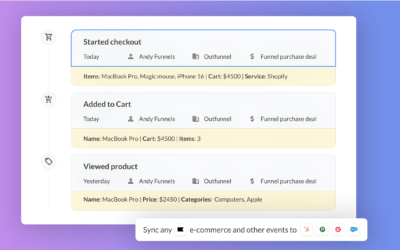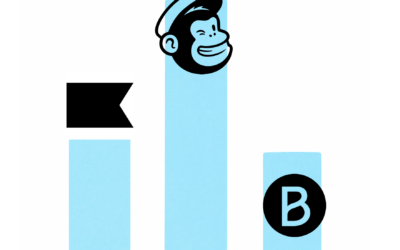I was recently chatting with Elor Pruvli, a renowned b2b sales expert and consultant. One bit from our conversation was so good I simply had to hit “Record” and type it up in a shareable format.
When it comes to lead generation and qualification, what’s the biggest mistake you’ve come across?
The one thing I keep seeing over and over again is that marketers are sending too many MQLs (marketing-qualified leads) to sales that are a long way from being genuinely qualified. So what if they’ve downloaded some content from your website or attended a webinar – the fact that they’re interested in some of your content doesn’t mean that they’re ready to buy.
If marketing produces too many unqualified leads, the first thing that happens is that sales starts to spend too much time with people who will not convert any time soon, pushing down sales productivity. And the second thing that happens is that they start to distrust all leads that marketing produces, even the good ones.
If you can only sell to every 50th lead, your funnel is simply too wide.
Is there a good way to detect that this is happening, that marketing to producing too many unqualified leads? If every 50th buying or 2% close rate is too small, is there a best-practice MQL-to-SQL or MQL-to-close ratio?
There’s no one figure or ratio I could provide as a guide. As always, it depends.
First, it depends on your deal size. With high-value deals, you have more leeway to spend time with less qualified leads. When you’re selling $200,000 services you can afford to invest in building a relationship. But if you’re selling something that costs low thousands of dollars, things are very different. Each lead you speak to better has at least some intent to buy a product or service in your category. Otherwise, you simply can’t make sales mathematics work.
The fact that they’re interested in some of your content doesn’t mean that they’re ready to buy
Elor Pruvli, B2B startup sales advisor at ScaleMode.io
Another thing that’s really important: how many companies are there in your target market? If there are only 200 possible companies to sell to in the whole world, you can’t be too choosy in who you think is “qualified”. You will simply have to invest in longer-term sales nurturing relationships with these target companies.
How to understand that the issue is not necessarily on the qualifying or marketing side, but improvements can be made on the sales side?
Sometimes the issues can be on the sales side. For example, if the sales cycles are very long, you’ll need SDRs to nurture leads into sales opportunities. You can’t expect a salesperson to have resources in nurturing and as well as closing lukewarm tire kicker leads effectively.
Another red flag is if you see bad sales pipeline hygiene like a lot of open deals or leads often ghosting your sales after the discovery, demo, or offer stage. Then sales might not have the optimal ownership of deals during the sales journey and pipeline steps.
Another common mistake is to make a demo or pricing offer too early in the sales cycle, without proper discovery and a good understanding if the prospect is a good match for your offering or not. It’s just as important to understand who’s not your buyer to have good sales productivity and a solid lead qualifying process.
So how do you fix this?
If your sales funnel is too wide, the easy fix would be to review your “qualified lead” definitions and make sure that the signals that go into that formula have at least some amount of buying intent. If you’re not sure about the buying intent, maybe you’d be better off nurturing these leads with content until the intent is clearer.
Having a good lead scoring method and a proper lead scoring software is usually a good idea.
But what I often advise my customers is to add an SDR (sales development representative) function between sales and marketing. Someone who would reach out to each lead and establish the real intent of that lead before this is passed to the sales team.
The caveat here is that the SDR approach works well once your average deal size is tens of thousands and above. This is especially essential when you are dealing with multiple stakeholder sales and some “group nurturing” is needed before the lead can be qualified as a sales opportunity.
With a more transactional single-person buyer journey this doesn’t work and more rigorous lead qualifying is needed. For example, if your average deal size is around $5-10K, you want to make sure that at least a third of the leads you are passing on to sales have an immediate sales opportunity – or you need to optimize your lead funnel better.
Thank you for the insights! Anything else you’d add in closing?
Getting a healthy sales pipeline and qualifying leads is a constant journey. It needs good cooperation between marketing and sales as you grow.
Especially if marketing tests and adds a new marketing channel like social, paid ads etc, then it’s good to look at these leads separately until this channel becomes “business as usual”. It might need a few iterations and feedback from sales to get the new marketing channel working.
Lastly, I would say that you need a good understanding who’s your focus ideal customer profile (ICP). Usually, it’s more nuanced than just a particular vertical with a certain company size. They need to have certain processes or pains for your offering to have the impact needed to make the sale. Marketing should get this feedback from sales and update the marketed ICP accordingly.
In general, if you find the topics above overwhelming or are not happy with the sales results it makes sense to get outside help to asses your processes and team. It’s very costly to fail at sales.
Elor Pruvli is a B2B SaaS sales expert and advisor to B2B startups. He has helped startups like Reply.io, Veriff, ReadyPlayer.me etc to get from seed stage and unpredictable sales to predictable and scalable sales. In the past, he was one of the first sales people at SimilarWeb, Monday.com and led EMEA Emerging markets Sales at Google.



